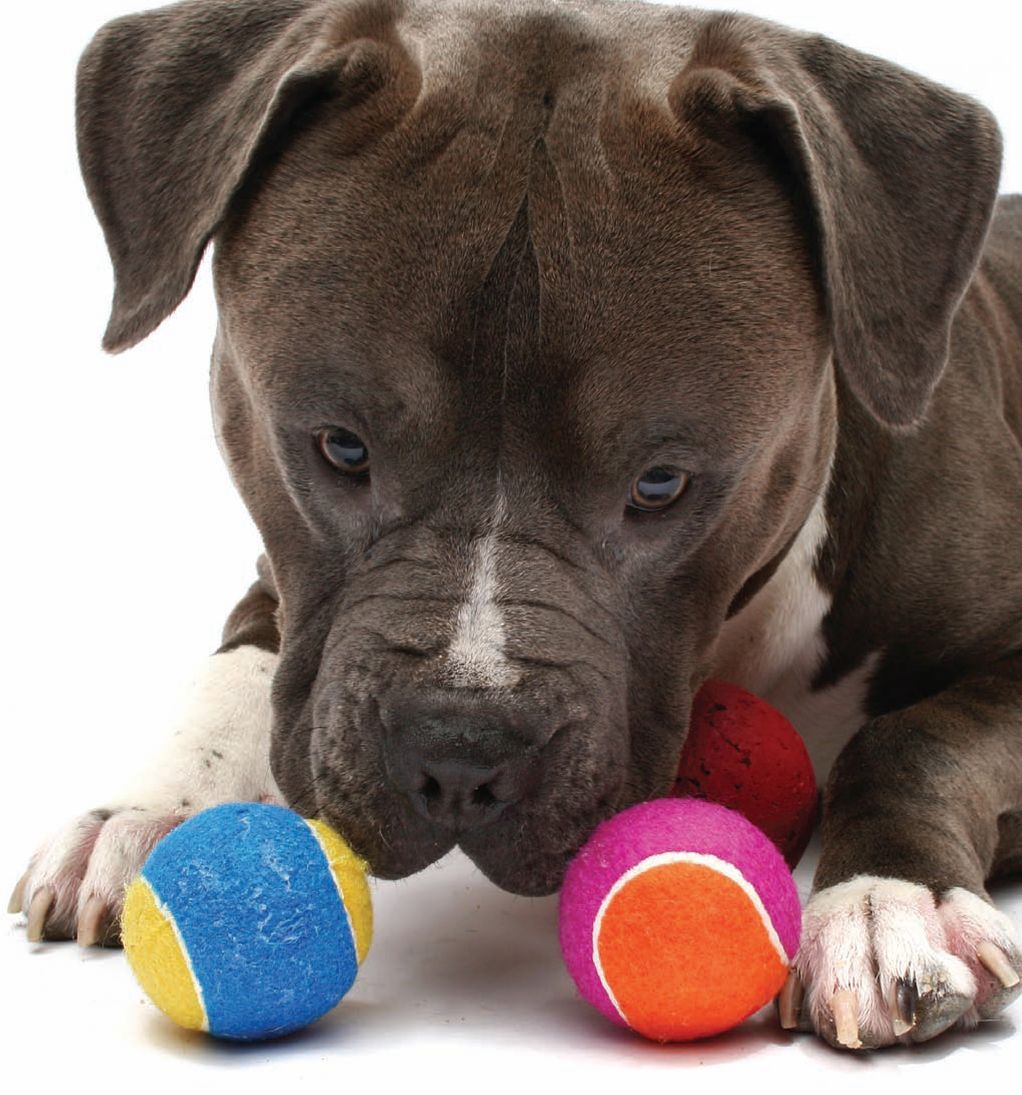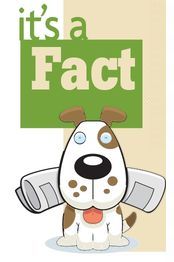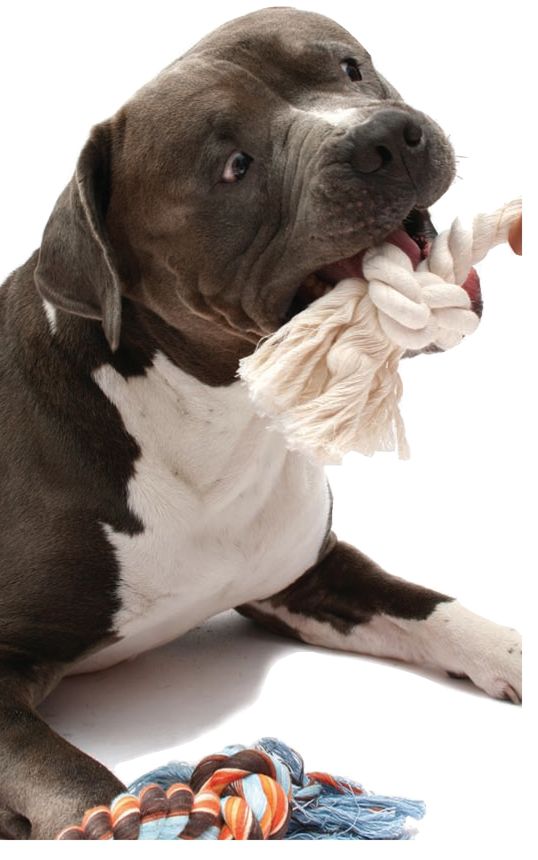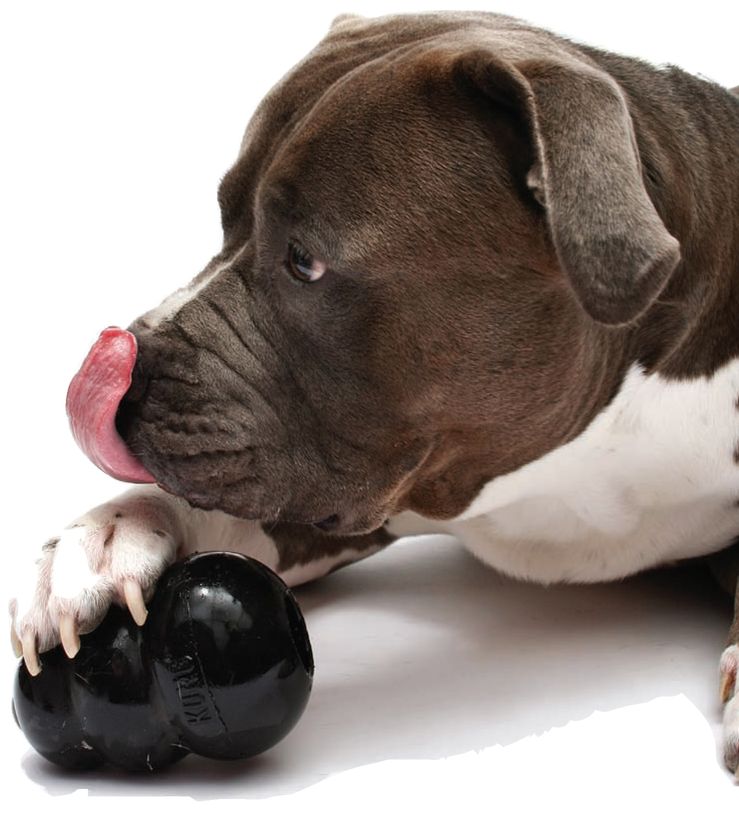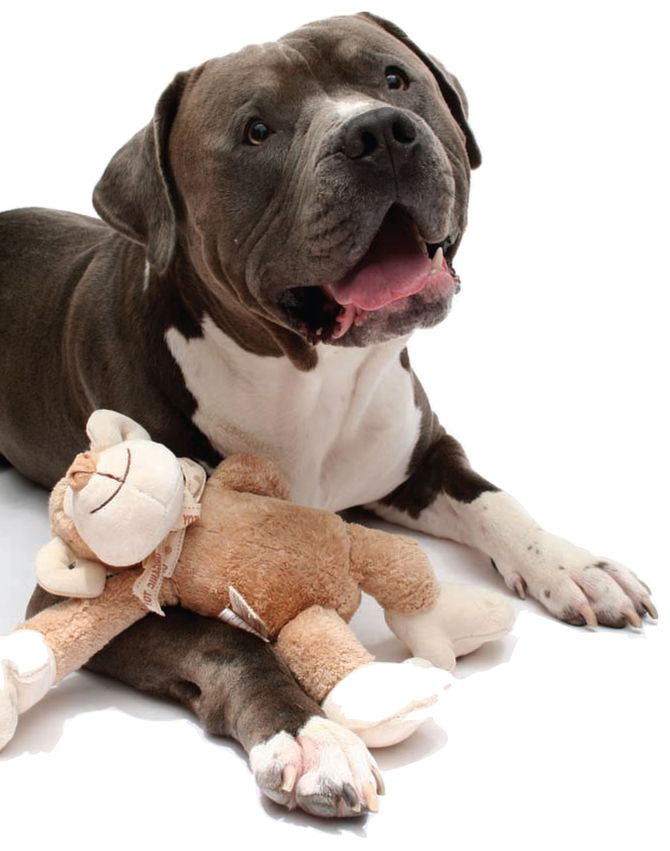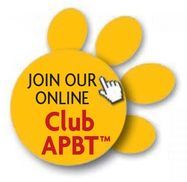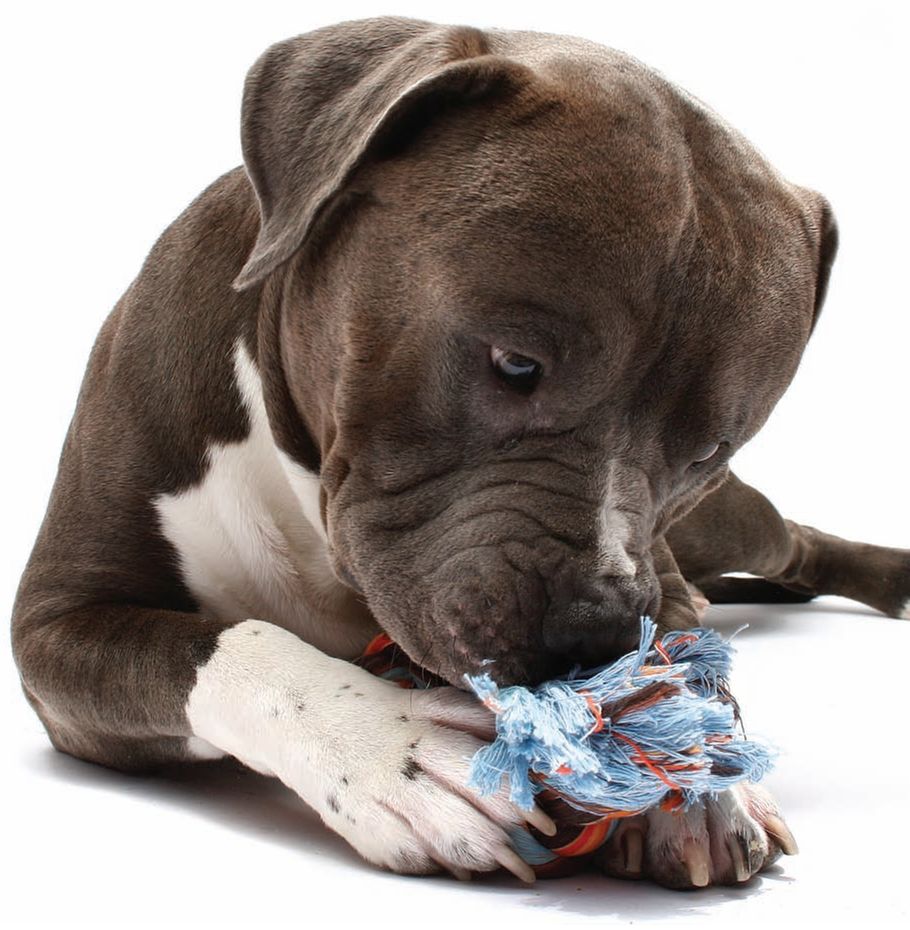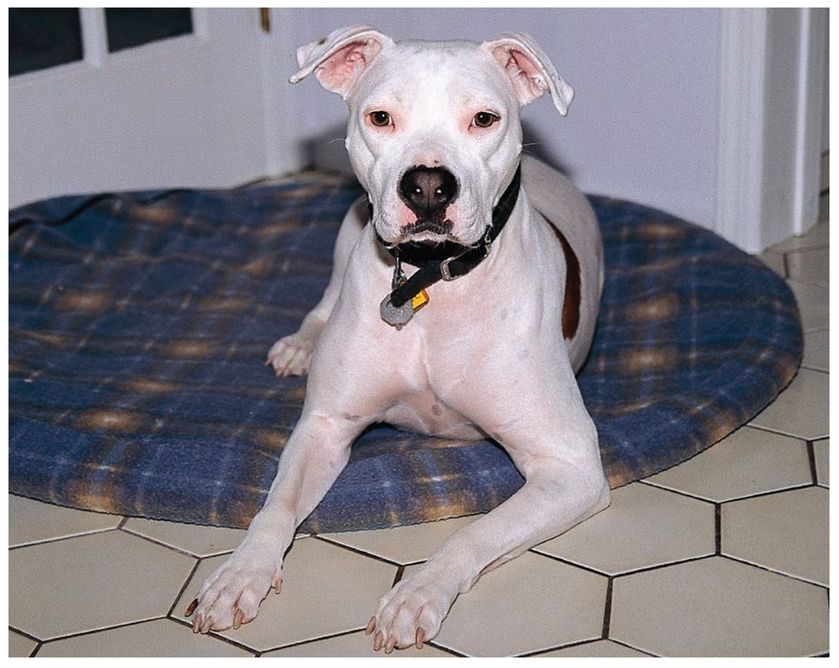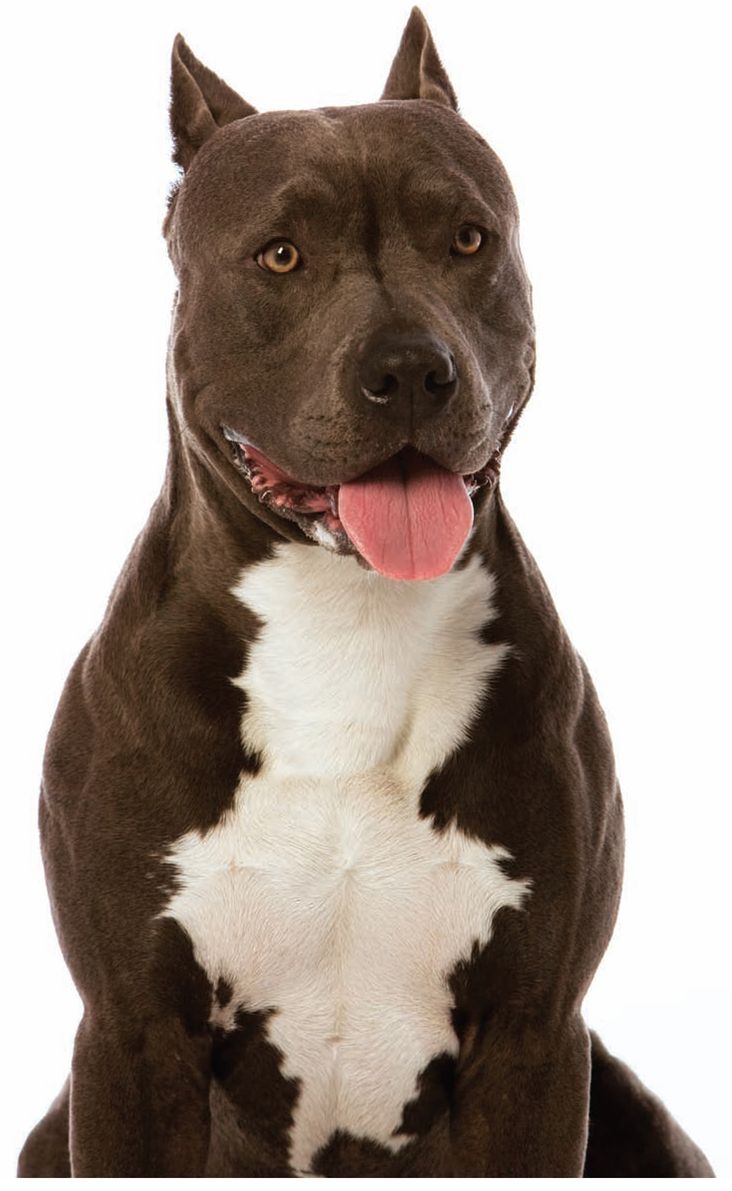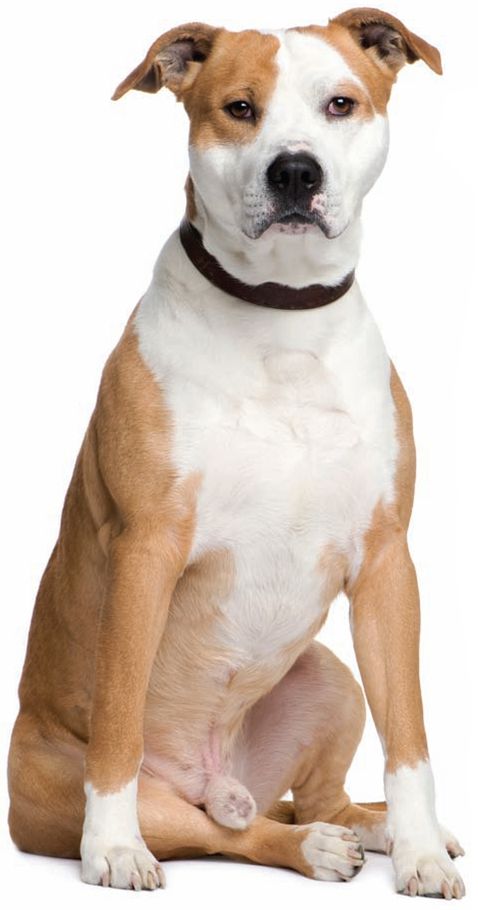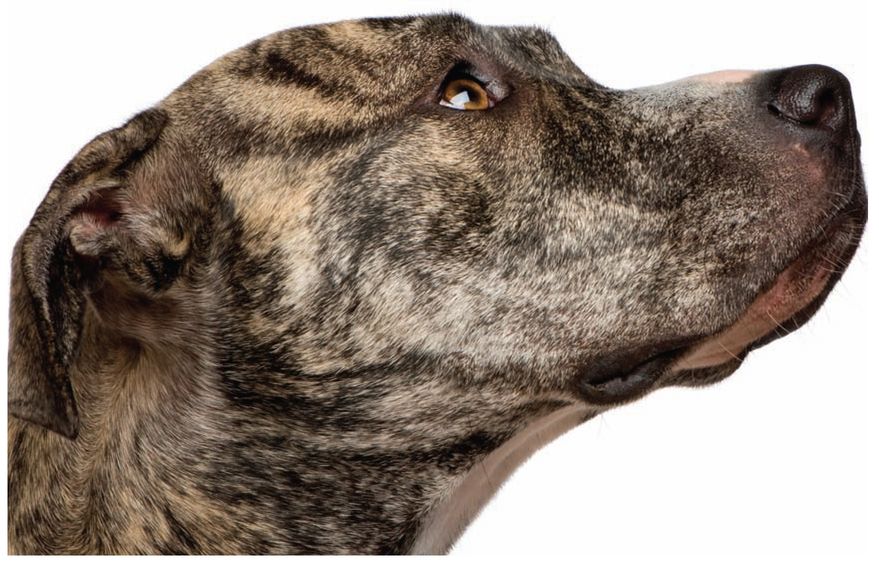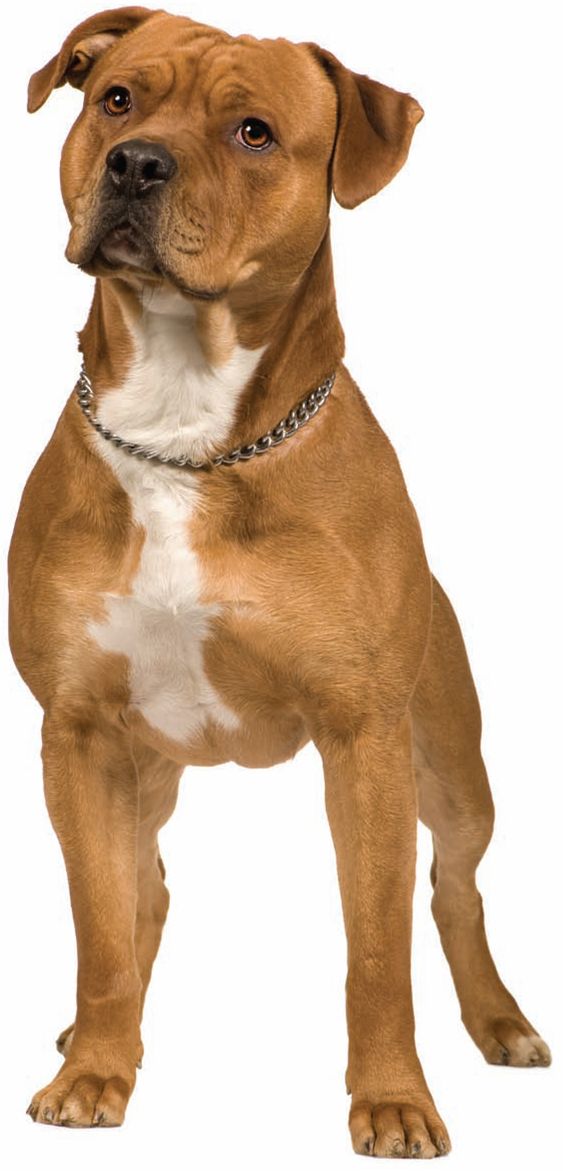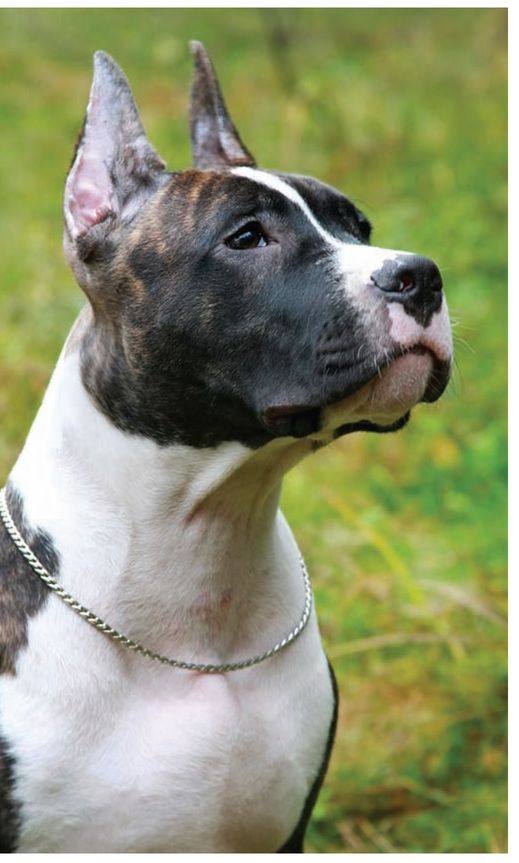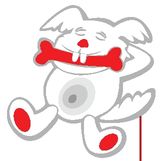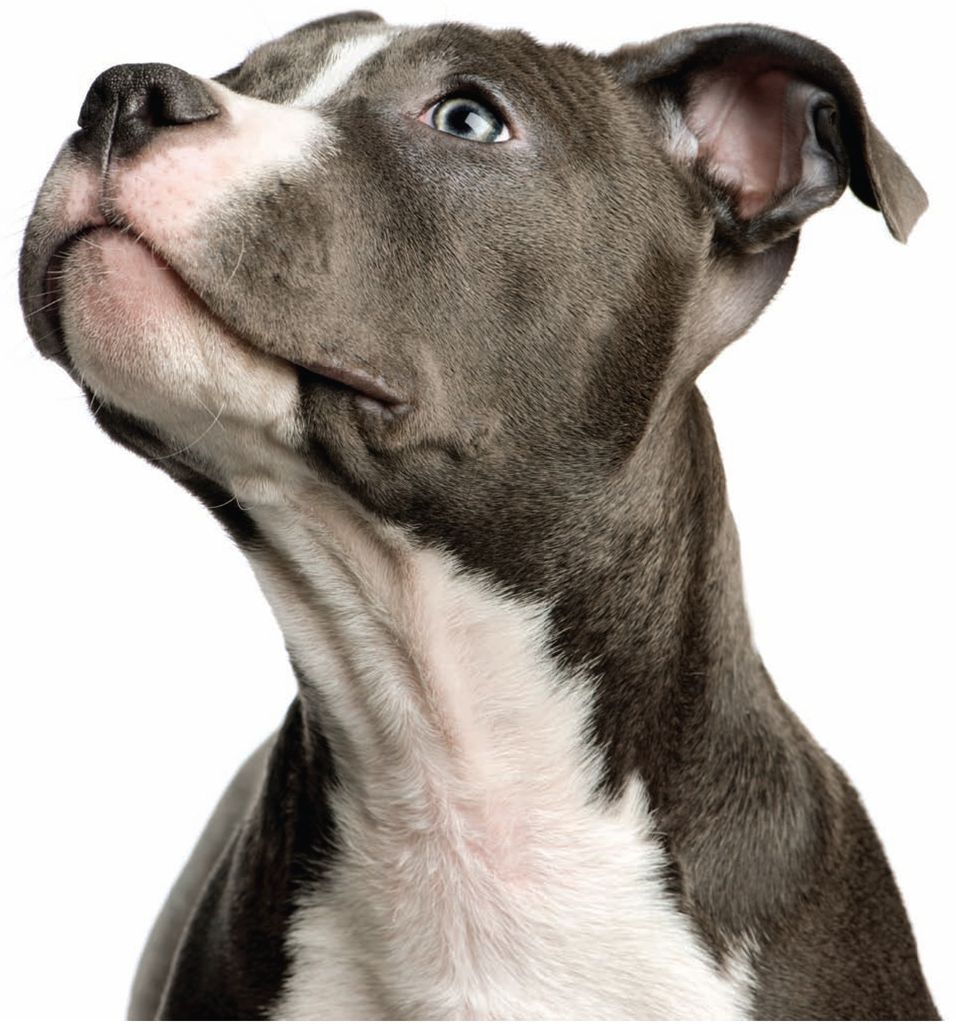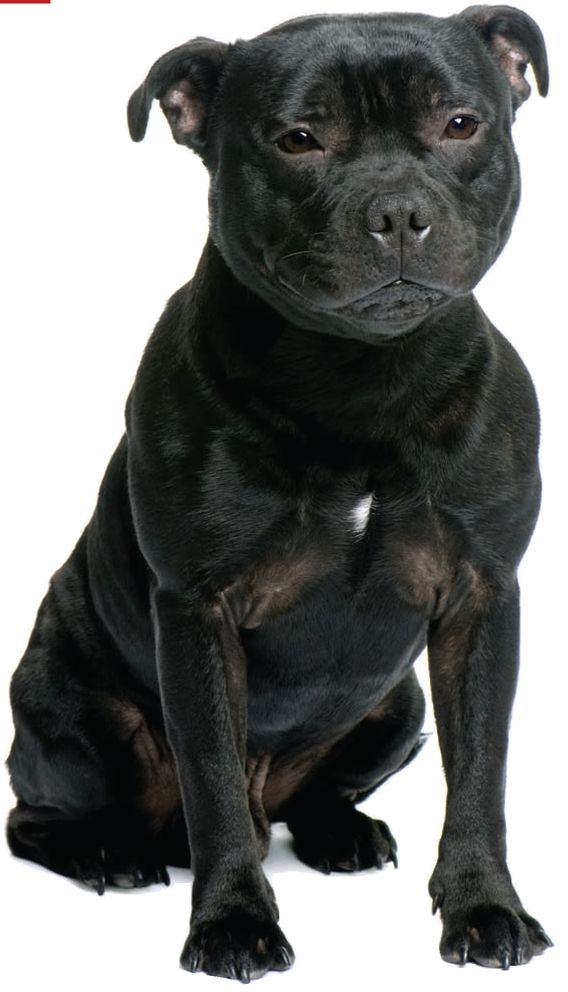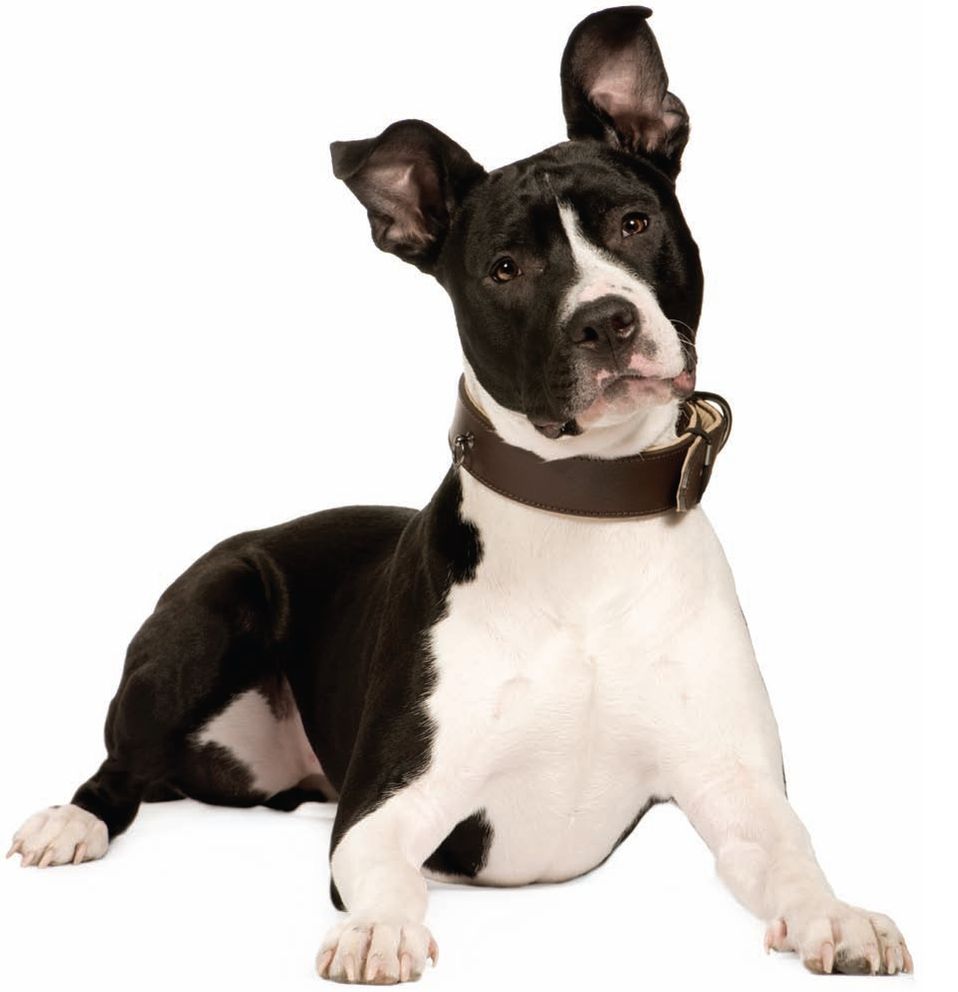CHAPTER 4
HOME ESSENTIALS
Don’t for one second think that a pit bull would prefer to live in a place described as a pit or a barn! He, like every other breed, wants to live in the best accommodations with plenty of toys, soft bedding and other luxuries. Your home is now his home, too. And before you bring that new puppy or rescue dog into his new forever home, you need to make it accessible for him.
In fact, in order for him to grow into a stable, well-adjusted dog, he has to feel comfortable in his surroundings. Remember, he is leaving the warmth and security of his mother and littermates, as well as the familiarity of the only place he has ever known, so it is important to make his transition to your home — his new home — as easy as possible.
PUPPY-PROOFING
Aside from making sure that your APBT will be comfortable in your home, you also have to ensure that your home is safe, which means taking the proper precautions to keep your pup away from things that are dangerous for him.
Dangers lurk indoors and out. Keep your curious pit bull from investigating your shed and garage. Antifreeze and fertilizers, such as those you would use for roses, will kill an APBT. Keep these items on high shelves that are out of reach from your dog.
A well-stocked toy box should contain three main categories of toys:
1. action — anything that you can throw or roll and get things moving
2. distraction — durable toys that make dogs work for a treat
3. comfort — soft, stuffed little “security blankets”
A smart owner will puppy-proof the home inside and out before bringing their APBT home for the first time. Place breakables out of reach. If he is limited to certain places within the house, keep potentially dangerous items in off-limit areas. If your APBT is going to spend time in a crate, make sure that there is nothing near it he can reach if he sticks his curious little nose or paws through the openings.
The outside of your home must also be safe. Your pup will want to run and explore the yard, and he should be granted that freedom — as long as you are there to supervise him. Do not let a fence give you a false sense of security; you would be surprised how crafty (and persistent) a dog can be in figuring out how to dig under a fence or squeeze his way through small holes. The remedy is to make the fence well embedded into the ground. Be sure to repair or secure any gaps in the fence. Check the fence periodically to ensure that it is in good shape and make repairs as needed; a very determined pit bull pup may work on the same spot until he is able to get through.
The following are a few common problem areas smart pit bull owners watch out for in the home:
■ Electrical cords and wiring: No electrical cord or wiring is safe. Many office-supply stores sell products to keep wires gathered under desks, as well as products that prevent office chair wheels (and puppy teeth) from damaging electrical cords. If you have exposed cords and wires, these products aren’t very expensive and can be used to keep a pup out of trouble.
■ Trash cans: Don’t waste your time trying to train your pit bull not to get into the trash. Simply put the garbage behind a cabinet door and use a child-safe lock if necessary. Dogs love bathroom trash (i.e., cotton balls, cotton swabs, used razors, dental floss, etc.), all of which are extremely dangerous! Put this trash can in a cabinet under the sink and make sure you always shut the door to the bathroom.
■ Household cleaners: Make sure your American Pit Bull Terrier puppy doesn’t have access to any of these deadly chemicals. Keep them behind closed cabinet doors, using child-safe locks if necessary.
■ Pest control sprays and poisons: Chemicals to control ants or other pests should never be used in the house, if possible. Your pup doesn’t have to directly ingest these poisons to become ill; if your pit bull steps in the poison, he can experience toxic effects from licking these toxins off of his paws. Roach motels and other poisonous pest traps can also be attractive to dogs, so do not drop these behind couches or cabinets; if there’s room for a roach motel, there’s room for a determined APBT.
■ Fabric: Here’s one you might not think about; some puppies have a habit of licking blankets, upholstery, rugs or carpets. Though this habit seems fairly innocuous, over time the fibers from the upholstery or carpet can accumulate in the dog’s stomach and cause a blockage. If you see your dog licking these items, remove the item or prevent him from having contact with it.
■ Prescriptions, painkillers, supplements and vitamins: Keep all medications in a cabinet. Also, be very careful when taking your prescription medications, supplements or vitamins. How often have you dropped a pill? With an APBT, you can be sure that your puppy will be at your feet and will snarf up the pill before you can even start to say “No!” Dispense your own pills carefully and without your APBT present.
Actor Humphrey Bogart and Lauren Bacall didn’t have a complete home until they brought home a pit bull named Harvey!
■ Miscellaneous loose items: If it’s not bolted to the floor, your puppy is likely to give the item a taste test. Socks, coins, children’s toys, game pieces, cat bell balls — you name it; if it’s on the floor, it’s worth a try. Make sure the floors in your home are picked up and free of clutter.
FAMILY INTRODUCTIONS
Everyone in the house will be excited about the puppy’s homecoming and will want to pet and play with him, but it is best to make the introduction low-key so as not to overwhelm the puppy. He will already be apprehensive. It is the first time he has been separated from his mother, littermates and the breeder, and the ride to your home is likely to be the first time he has been in a car. The last thing you want to do is smother your APBT, as this will only frighten him further. This is not to say that human contact is not extremely necessary at this stage because this is the time when a connection between the pup and his human family is formed. Gentle petting and soothing words should help console your APBT, as well as just putting him down and letting him explore on his own (under your watchful eye, of course).
Your dog may approach the family members or may busy himself with exploring for a while. Gradually, each person should spend some time with the pup, one at a time, crouching down to get as close to the APBT’s level as possible and letting him sniff their hands before petting him gently. He definitely needs human attention and he needs to be touched; this is how to form an immediate bond. Just remember that the pup is experiencing a lot of things for the first time, at the same time. There are new people, noises, smells and things to investigate, so be gentle, be affectionate and be as comforting as possible.
Before you bring your pit bull home, make sure you don’t have anything that can put him in harm’s way. Go to Club APBT and click “Downloads” for a list of poisonous plants and foods to avoid as well as a puppy-proofing checklist:
DogChannel.com/Club-APBT
The first thing you should always do before your puppy comes home is to lie on the ground and look around. You want to be able to see everything your puppy is going to see. For the puppy, the world is one big chew toy.
— Cathleen Stamm, rescue volunteer in San Diego, Calif.
PUP’S FIRST NIGHT HOME
You have traveled home with your new charge safely in his crate. He may have already been to the vet for a thorough checkup — he’s been weighed, his papers examined, perhaps he’s even been vaccinated and dewormed, as well. Your APBT has met and licked the whole family, including the excited children and the less-than-happy cat. He’s explored his area, his new bed, the yard and anywhere else he’s permitted. He’s eaten his first meal at home and relieved himself in the proper place. Your APBT has heard lots of new sounds, smelled new friends and seen more of the outside world than ever before.
9-1-1! If you don’t know whether the plant or food or “stuff” your pit bull just ate is toxic to dogs, you can call the ASPCA’s Animal Poison Control Center (888-426-4435). Be prepared to provide your dog’s age and weight, his symptoms — if any — and how much of the plant, chemical or substance he ingested, as well as how long ago you think he came into contact with the substance. The ASPCA charges a consultation fee for this service.
Make your home as comfortable as possible for your pit bull.
Even older dogs need items and places to call their own. As your dog grows, buy him new toys and bedding as those items age.
Everyone who rides in your car has to buckle up — even your pit bull! Your dog can travel in the car inside his crate, or you can use a doggie seat belt. These look like harnesses that attach to your car’s seat-belt system.
This was just the first day! He’s worn out and is ready for bed — or so you think! Remember, this is your puppy’s first night to sleep alone. His mother and littermates are no longer at paw’s length and he’s scared, cold and lonely. Be reassuring to your new family member, but this is not the time to spoil your APBT and give in to his inevitable whining.
Puppies whine. They whine to let others know where they are and hopefully to get company out of it. Place your APBT puppy in his new bed or crate in his room and close the door. Mercifully, he may fall asleep without a peep. If the inevitable occurs, ignore the whining; he is fine. Do not give in and visit your pit bull puppy. Don’t worry, he will fall asleep eventually.
Many breeders recommend placing a piece of bedding from his former home in his new bed so that he recognizes the scent of his littermates. Others advise placing a hot water bottle in his bed for warmth. The latter may be a good idea provided the pup doesn’t attempt to suckle; he’ll get good and wet and may not fall asleep so fast.
Your APBT’s first night can be somewhat terrifying for him and his new family. Remember that you set the tone of nighttime at your house. Unless you want to play with your pup every night at 10 p.m., midnight and 2 a.m., don’t initiate the habit. Your family will thank you, and so will your pup!
SHOPPING FOR AN APBT
It’s fun shopping for a new puppy. From training to feeding and sleeping to playing, your new pit bull will need a few items to make life comfy, easy and fun. Be prepared and visit your local pet-supply store before you bring home your new family member.
Playing with toys from puppyhood encourages good behavior and social skills throughout the dog’s life. A happy, playful dog is a content and well-adjusted one. Also, because all puppies chew to soothe their gums and help loosen puppy teeth, dogs should always have easy access to several different toys.
— dog trainer and author Harrison Forbes of Savannah, Tenn.
Keep a crate in your vehicle and take your APBT along when you visit the drive-through at the bank or your favorite fast-food restaurant. He can watch interactions, hear interesting sounds and maybe garner a dog treat.
◆ Collar and ID tag: Accustom your dog to wearing a collar the first day you bring him home. Not only will a collar and ID tag help your pup in the event that he becomes lost, but collars are also an important training tool. If your pit bull gets into trouble, the collar will act as a handle, helping you divert him to a more appropriate behavior. Make sure the collar fits snugly enough so your pit bull cannot wriggle out of it but is loose enough so it will not be uncomfortably tight around his neck. You should be able to fit a finger between the pup and the collar. Collars come in many styles, but for starting out, a simple buckle collar with an easy-release snap works great.
◆ Leash: For training or just for taking a stroll down the street, a leash is your pit bull’s vehicle to explore the outside world. Like collars, leashes come in a variety of styles and materials. A 6-foot nylon leash is a popular choice because it is lightweight and durable. As your pup grows and gets used to walking on the leash, you may want to purchase a flexible leash. These leads allow you to extend the length to give the dog a broader area to explore or to shorten the length to keep the dog closer to you.
◆ Bowls: Your pit bull will need two bowls — one for water and one for food. You may want two sets of bowls, one for inside and one for outside, depending on where the dog will be fed and where he will be spending time. Bowls should be sturdy enough so that they don’t tip over easily. (Most have reinforced bottoms that prevent tipping.) Bowls usually are made of metal, ceramic or plastic and should be easy to clean.
A well-fitting collar and ID tag are must-have items for your dog. Make sure you purchase ones that are appropriately sized.
◆ Crate: A multipurpose crate serves as a bed, housetraining tool and travel carrier. It also is the ideal doggie den — abedroom of sorts — that your pit bull can retire to when he wants to rest or just needs a break. The crate should be large enough for your pit bull to stand in, turn around and lie down. You don’t want any more room than this — especially if you’re planning on using the crate to housetrain your dog — because he will eliminate in one corner and lie down in another. Get a crate that is big enough for your dog when he is an adult. Then, use dividers to limit the space for when he’s a puppy.
Funny Bone
To err is human, to forgive, canine.
— Anonymous
◆ Bed: A plush doggie bed will make sleeping and resting more comfortable for your pit bull. Dog beds come in all shapes, sizes and colors, but your dog just needs one that is soft and large enough for him to stretch out on. Because puppies and rescue dogs often don’t come housetrained, it’s helpful to buy a bed that can be washed easily. If your pit bull will be sleeping in a crate, a nice crate pad and a small blanket that he can “burrow” in will help him feel more at home. Replace the blanket if it becomes ragged and starts to fall apart because your pit bull’s nails could get caught in it.
◆ Gate: Similar to those used for toddlers, gates help keep your pit bull confined to one room or area when you can’t supervise him. Gates also work to keep your dog out of areas you don’t want him in. Gates are available in many styles. For pit bulls, make sure the one you choose has openings small enough so your puppy can’t squeeze through the bars or any openings.
Your pit bull puppy will look to you to be his caregiver, best friend and pack leader.
When you are unable to watch your pit bull puppy, put him in a crate or an exercise pen on an easily cleanable floor. If he does have an accident on carpeting, clean it completely and meticulously, so that it does not forever smell like his potty accident.
◆ Toys: Keep your dog occupied and entertained by providing him with an array of fun toys. Teething puppies like to chew — in fact, chewing is a physical need for pups as they are teething — and everything from your shoes to the leather couch to the fancy rug are fair game. Divert your pit bull’s chewing instincts with durable toys like bones made of nylon or hard rubber.
Other fun toys include rope toys, treat-dispensing toys and balls. Make sure the toys and bones don’t have small parts that could break off and be swallowed, causing your dog to choke. Stuffed toys can become destuffed and an overly excited pit bull puppy may ingest the stuffing or the squeaker. Check your APBT’s toys regularly and replace them if they become frayed or show signs of wear.
◆ Cleaning supplies: Until your pit bull pup is housetrained, you will be doing a lot of cleaning. Accidents will occur, which is acceptable in the beginning because the puppy doesn’t know any better. All you can do is be prepared to clean up any accidents. Old rags, towels, newspapers and a stain-and-odor remover are good to have on hand.
BEYOND THE BASICS
The items previously discussed are the bare necessities. You will find out what else you need as you go along — grooming supplies, flea/tick protection, etc. These things will vary depending on your situation, but it is important that you have everything you need to make your APBT comfortable in his new home.
Pit bulls thrive on human interaction. Don’t just give your dog a toy and then leave - stay and play with him for a while.
Some ordinary household items make great toys for your pit bull — as long you make them safe. You will find a list of homemade toys at
DogChannel.com/Club-APBT — click “Downloads.”
